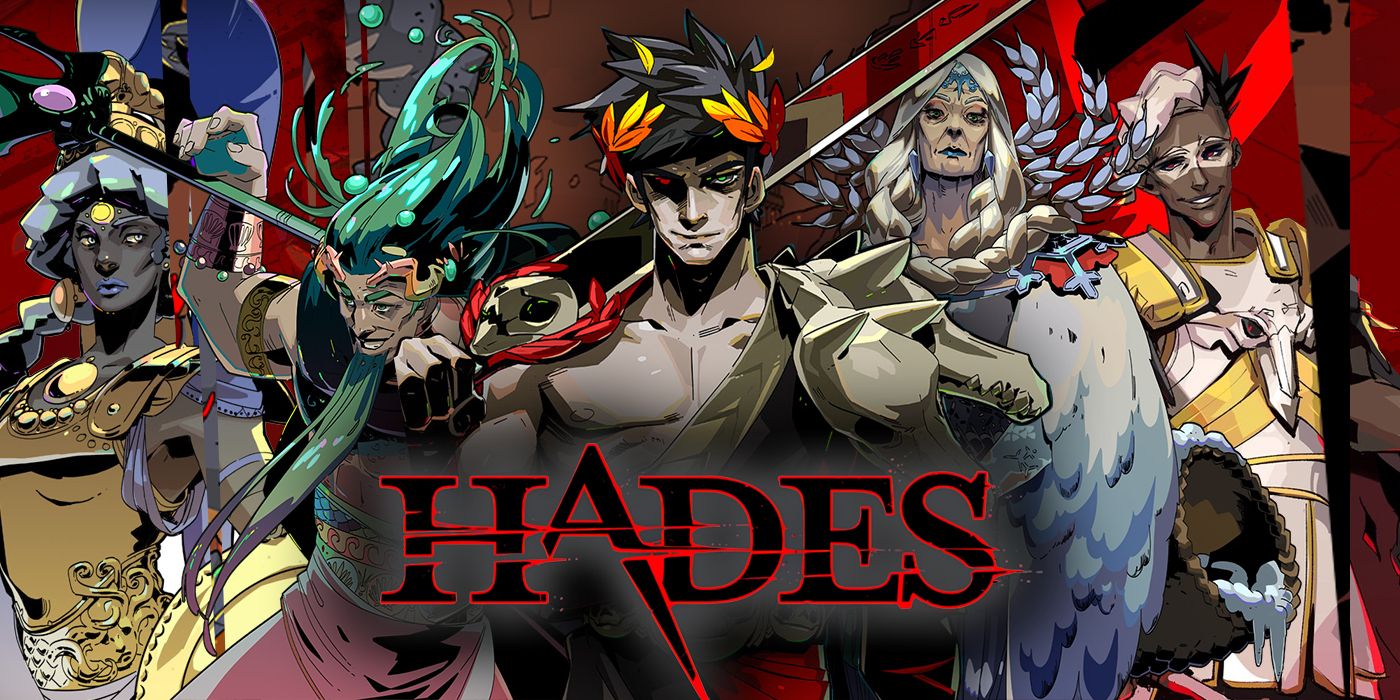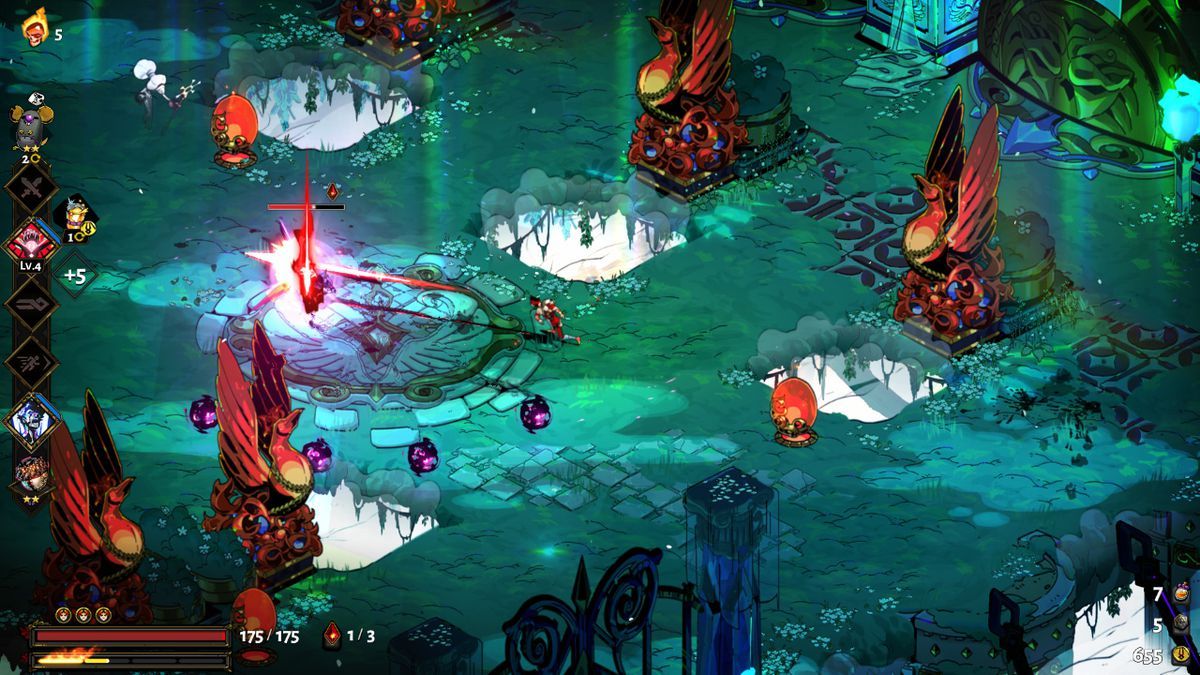It’s not uncommon for roguelike games to achieve critical and commercial success. However, with an emphasis on permadeath and a reset of one’s progress after every run, they do tend to be a slightly more niche genre. It’s rare for a roguelike to really break the mold and enter the mainstream gaming discussion. It’s even rarer for one to completely sweep multiple Game Of The Year awards. Hades may share the moniker of roguelike, but it’s difficult to overstate how far and above the title shines even compared to its most decorated contemporaries. And it’s not at first easily apparent why this is the case. It has smooth, satisfying gameplay, a compelling narrative excuse to run through dozens of combat arenas, and a stylish visual aesthetic. Plenty of other roguelikes have these aspects and more, so what makes Hades such a standout? The answer lies in the ingenious systems that regulate and drive the player’s experience throughout their many attempts to escape the underworld.
Roguelike is a genre based on permadeath and the risk of losing all your hard-earned upgrades upon failure. This is a large part of what makes these types of games popular, as the frustration of failure makes the eventual triumphs feel all the more earned. However, many roguelikes tend to commit to the ‘blank slate’ philosophy of repeated runs, which can increase the sense of frustration that comes with failure. While some roguelikes will offer a handful of permanent upgrades that persist between runs, death in most titles of the genre means a full reset of your progress. In most roguelikes, death is nothing less than a failure of your ability to complete the level or stage set before. The genius of Hades comes from its ability to flip the script on what it means to progress in a roguelike. Rather than having failure be a punishment for players, Hades revels in letting the player fall down so that they can put them right back on their feet to try again. In Hades, failure is the point and just one more stepping stone to your eventual victory.
From the first run in Hades, players start at a serious disadvantage. The monsters are simply too strong, and the player’s avatar, Zagreus, lacks the raw strength needed to reliably climb their way to the upper floors of the underworld. Eventually, the player will die and be unceremoniously dumped back at the halls of Hades. However, if the player has managed to make a few steps of progress toward their goal, they won’t come back empty-handed. Throughout each run, players will accumulate a resource known in-game as Darkness. Using an item in Zagreus’ room known as the Mirror of Night, players can use their Darkness to purchase any number of permanent upgrades for Zagreus: extra health, increased damage to monster flanks, more dashes, an infusion of money for shops during runs, the list goes on. Every time players fail a run in Hades, there’s almost always an upgrade or two they’ll be able to purchase to assist them in their next run.
And this sounds like a stunningly simple design choice to have so much praise heaped onto it. But it marks a key difference between Hades and other games of its ilk. Just like in other roguelikes, Hades contains a litany of upgrades and power-ups that can only be found during each attempt, manifested as boons from the various Greek gods. Poison attacks, bladed dashes, and extra movement speed are just a few of the buffs available to help Zagreus climb toward his goal. And just like other roguelikes, these upgrades are lost upon death. However, the upgrades purchased at the Mirror of Night remain constant, available to players at the start of the next run. What this does for the player is help ease some of the frustration that typically comes with the roguelike genre. Progress during a run may be lost, but there’s the comforting knowledge that you can still progress outside of runs too. Players can die over and over again, never making it past even the first floor, and they can still feel as if they are making some sort of progress. No matter how devastating it feels to fail a run just before a major checkpoint, the knowledge that it wasn’t all in vain is a small but crucial factor in keeping players determined rather than merely frustrated. Other roguelikes will make victory seem like a nigh unattainable goal, demanding hours of practice to perfect one’s skills in the hope that they will become worthy of seeing all the game has to offer. Hades on the other hand is always quick to remind the player that it wants them to succeed. With each floor conquered, the player gains more and more permanent upgrades. As their strength noticeably increases, players are constantly pushed upward and encouraged to keep forcing the boundaries of what the game thinks they are capable of.
Even when they inevitably fail and are sent back to Hades’ domain, NPCs will constantly offer words of encouragement and advice for the player. Barring the gruff, hostile demeanor of Hades himself, every part of this world makes it clear that they are rooting for the player. And this is what has propelled Hades into the near-universal acclaim and popularity it has received. By giving players a separate form of progression outside of the actual runs themselves, there is always an upper limit to the disappointment of failure. The biting frustration of losing one’s progress after a deep run is almost instantly counteracted by the thought of what upgrades you’ll purchase once you return to the House of Hades. And as the player grows stronger, their baseline strength becomes strong enough to propel them through the lower floors. This means that the player spends less time grinding through sections they’ve already beaten, and more time preparing to take on the current obstacle blocking their progress. In a way, Hades’ progression is a bit like weight-lifting. You start off relatively weak, struggling to push Zagreus even to the end of the first floor. However, just as you become stronger in the gym through consistent workouts and repetition, the player becomes stronger simply by way of playing the game. And as you push yourself to greater and greater heights, monsters that once would have been a definite game over are now trifling distractions. Players go from struggling to curl a 10-pound dumbbell to bench pressing a school bus, with the game pushing them to go even further than that. With such constant positive reinforcement from the game, failure becomes less of a setback and more of a promise for even greater heights to be attained.
Hades is a roguelike at heart, but the attitude it takes toward player progression is a breath of fresh air for the genre. Other games of the genre put considerably more effort in pushing against the player, constantly kicking them into the dirt and telling them to prove themselves worthy of seeing all it has to offer. Hades still embodies this philosophy to an extent, but it puts a much greater emphasis on supporting players’ progress rather than erasing it. Like a personal trainer, Hades can’t lift the weights for you. What it can do however is give you the tools to succeed, and just enough support to make you believe in yourself in the face of overwhelming odds. Only time will tell whether or not its ideas are popular enough for developers to take notice and consider implementing in their own titles in the future. Regardless, in a genre that gained its notoriety by being cutthroat and apathetic toward player progression, Hades’ constant stream of positive reinforcement is a welcome shift for roguelike games as a whole.


